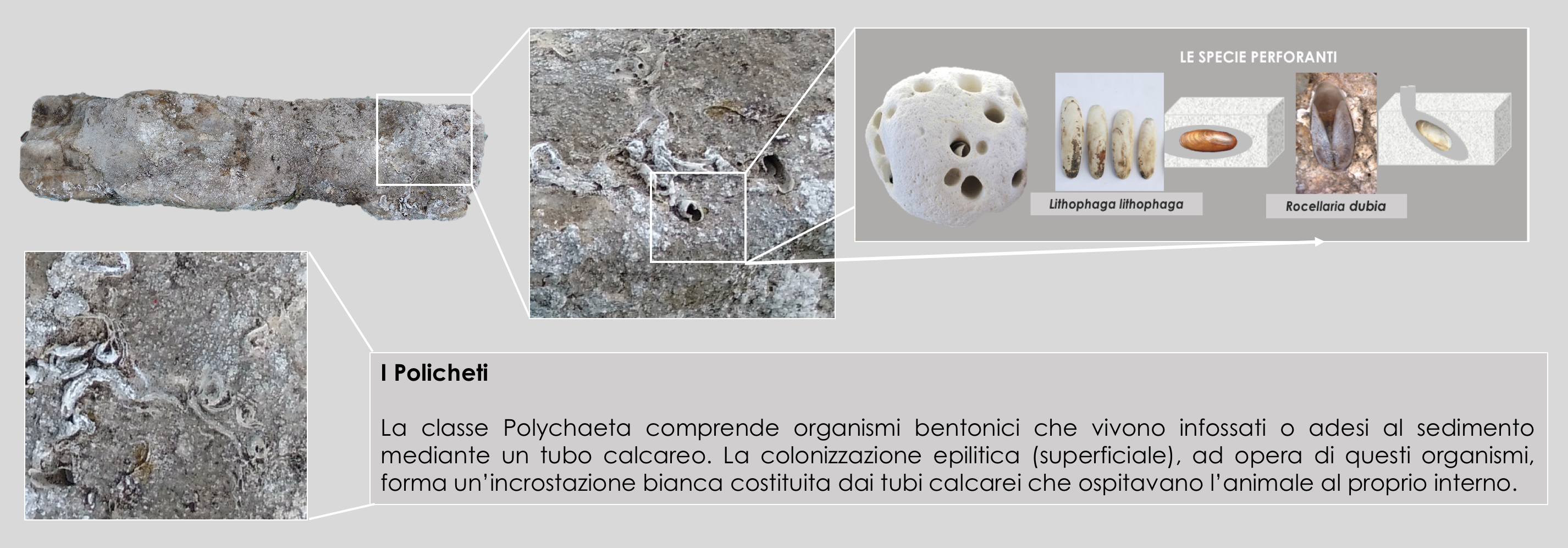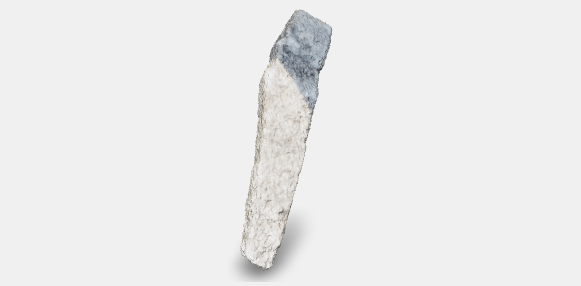Stone anchor stock. Marine encrustations. Trapezoidal shape, with a fairly squared central cavity. Partially mutilated of one of the arms.
The anchor presents an epilithic (superficial) colonisation caused mainly by Polychaeta serpulidae with their characteristic calcareous tube, together with an endolithic colonisation, limited to some points and caused by the endolithic mollusc Rocellaria dubia. This degradation is confirmed by the presence of a characteristic 8-shaped hole, produced by the animal to protrude its siphons in the water.

MEDAGLIA 2002, p. 178
1 For a review of the most known anchor stocks, see GIANFROTTA 1975; Id. 1977 and ID. 1982. On some stone anchor stocks found in Metapontum and Locris (used by devotees during rites), see BOETTO 1997, pp. 51 and ff.
REFERENCES
Boetto G. 1997, Ceppi litici “sacri” e culti aniconici a Metaponto e a Locri, in Archeologia Subacquea II, pp. 51-64.
Gianfrotta P.A. 1975, Le ancore votive di Sostrato di Egina e di Faillo di Crotone, in La Parola del Passato, 30, pp. 311-318.
Gianfrotta P.A. 1977, First elements for the dating of stone anchors stocks, in IJNA VI, pp. 285-292.
Gianfrotta P.A. 1982, L’ancora di Klutikuna (ovvero, considerazioni sulla tomba 245 di Valle Trebba), in Bollettino dei Musei Ferraresi 12, pp. 59-62.
Medaglia S. 2002, Materiali erratici dal mare di Kaulonia, in Archeologia Subacquea, Studi Ricerche, Documenti, III, pp. 163-185.



